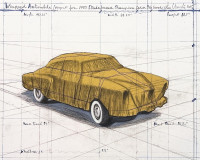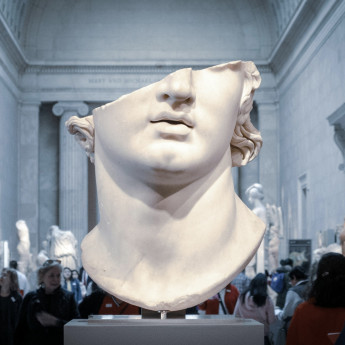
Details
Artist
Styles
Original Screenprint in colors on paper - In excellent condition - Hand signed and numbered // Niki de Saint Phalle's Daddy (1973) is a bold and expressive screen-print that exemplifies her unique style and exploration of personal themes. The artwork features a central figure with vibrant, wing-like extensions, surrounded by various playful and surreal elements, including a floating female figure and a smaller figure in a thought bubble. The word “DADDY” is prominently displayed in large, stylized letters below the central figure, adding a confrontational and provocative aspect. The use of bright colors and whimsical forms gives the piece a dynamic and chaotic energy, reflecting de Saint Phalle's often autobiographical and feminist commentary. This limited edition print, hand-signed and numbered, demonstrates her powerful visual language and bold narrative style.
Daddy, 1973
form
Medium
Size
59.1 x 83.8 cm
- Inches
- Centimeters
Edition
Price
- USD
- EUR
- GBP
Details
Artist
Styles
Original Screenprint in colors on paper - In excellent condition - Hand signed and numbered // Niki de Saint Phalle's Daddy (1973) is a bold and expressive screen-print that exemplifies her unique style and exploration of personal themes. The artwork features a central figure with vibrant, wing-like extensions, surrounded by various playful and surreal elements, including a floating female figure and a smaller figure in a thought bubble. The word “DADDY” is prominently displayed in large, stylized letters below the central figure, adding a confrontational and provocative aspect. The use of bright colors and whimsical forms gives the piece a dynamic and chaotic energy, reflecting de Saint Phalle's often autobiographical and feminist commentary. This limited edition print, hand-signed and numbered, demonstrates her powerful visual language and bold narrative style.
- Recently Added
- Price (low-high )
- Price (high-low )
- Year (low-high )
- Year (high-low )
What is Art Informel?
Art Informel is a French term referring to the gestural and improvisational techniques common in abstract painting during the 1940s and 50s. It encompasses various styles that dominated these decades, characterized by informal, spontaneous methods. Artists used this term to describe approaches that moved away from traditional structures and embraced more expressive, unstructured techniques.















